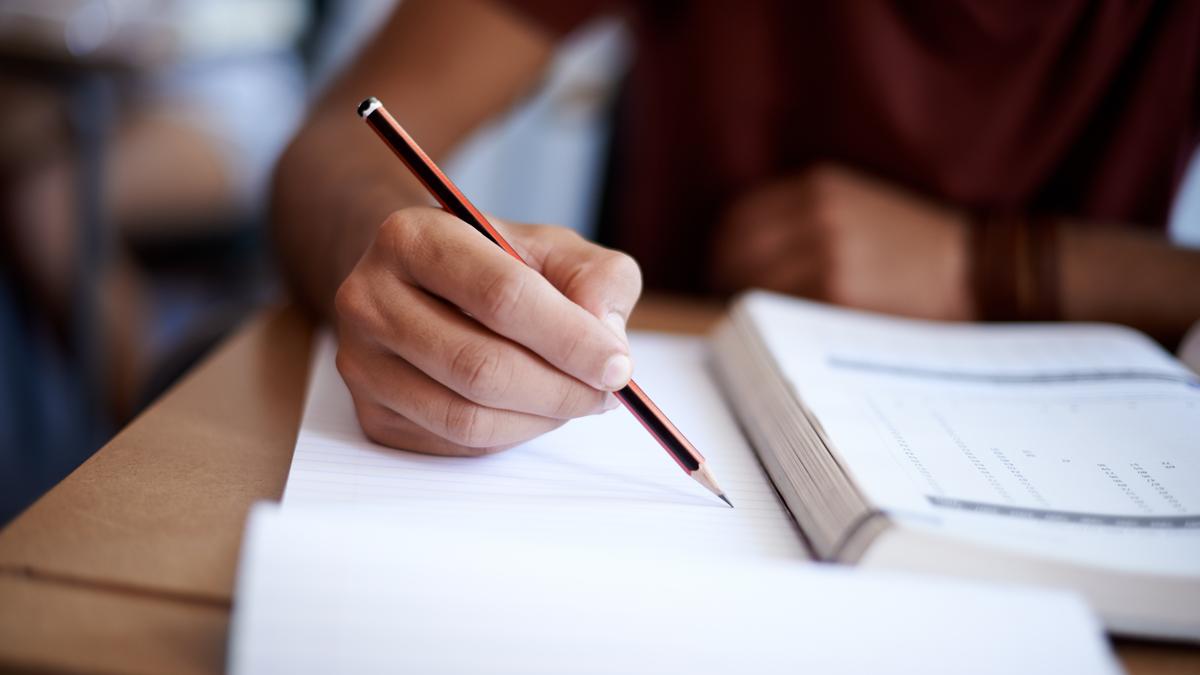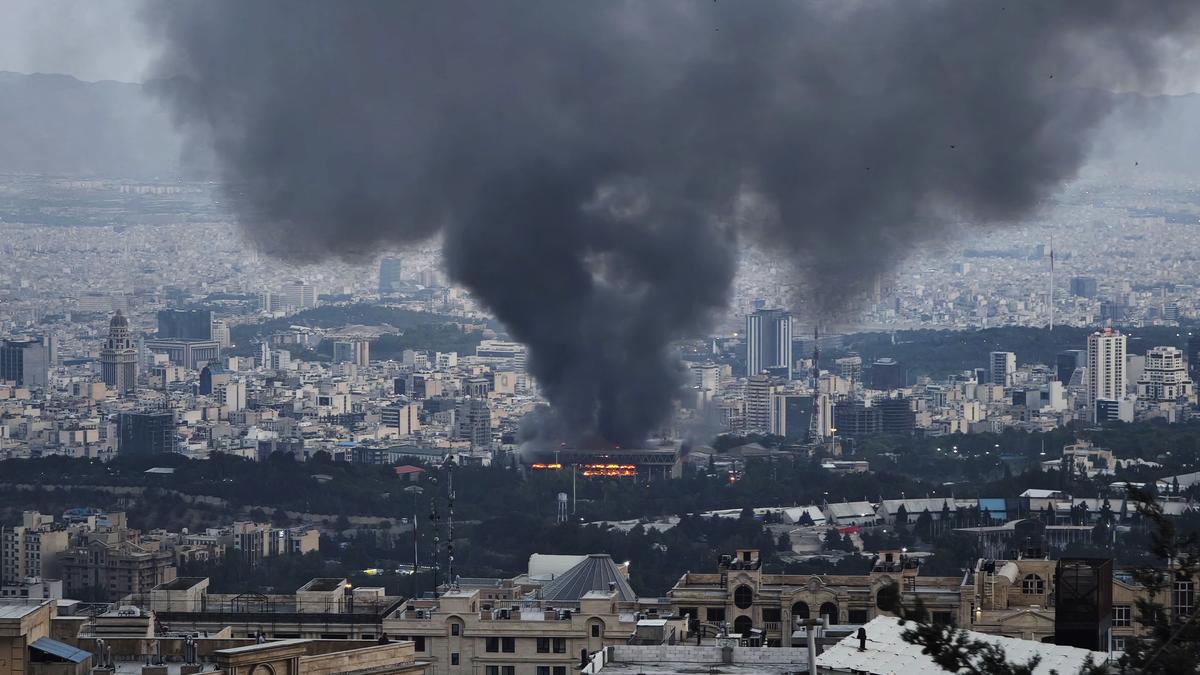ARTICLE AD BOX
The sky was glowing with streaks of light and trails of smoke. The roar of fighter jets echoed across the city as sirens wailed in the distance. From her fifth-floor dormitory in Tehran, the thunderclap of a nearby explosion shook the window panes. A repetitive cracking sound—gunfire, perhaps—or another blast nearby.
This is how a 22-year-old MBBS student from Hyderabad, studying at Tehran University of Medical Sciences, described the night of June 13. “We heard a loud thunder-like sound around 3:20 am,” she said. “Then we saw black smoke. Everyone started running. I heard a fighter jet. Then we heard firing. It felt like the war was literally over our heads.”
“The war wasn’t on television. It was outside my window,” she said.
The student, who has since been moved to Qom—about 200 kilometres from Tehran—for safety, said their dormitory experienced a blackout and students were unable to eat or sleep for two days. “Our dean came on Friday and said the dorm is the safest place. But the situation got worse. They started moving students to bunkers and basements back in Tehran across universities. We’re safe for now, but terrified.”
As the Israel-Iran conflict entered its fourth day Monday, Indian students—many from Jammu and Kashmir—found themselves caught in the crossfire of a war between two nations they have no stake in. “We are just here to study,” the 22-year-old student said. “And now we are a part of a war between two countries we don’t even belong to.”
In a Rajya Sabha unstarred question answered on August 1, 2024, the Ministry of External Affairs confirmed that, as of early 2024, there were about 1,700 Indian students in Iran, many of them enrolled in medicine at institutions like Tehran University of Medical Sciences, Shahid Beheshti University, and Islamic Azad University.
A 22-year-old second-year MBBS student from Kashmir at Tehran University of Medical Sciences said her dormitory’s windows shattered during one of the attacks. “I don’t even know exactly what’s happening,” she said. “But we’ve been awake for four nights now. Today they bombed a place near our university. It was really bad.”
Story continues below this ad
Another student at Shahid Beheshti University said they spent Saturday in the underground section of their residence. “The noise did not stop at all. The defense activity is all around us. It’s like living in a war movie, but we’re in it. We panicked for a day because we heard that Iran’s defence system was down. We are unable to make any movement.”
“The sky was full of flashes last night,” said one second-year student. “Our universities are providing us with food and other support, but we want our government to initiate evacuation. We are looking at students from other countries who are being evacuated back to their own homes and we want to request the government of India to do the same.”
“I haven’t been able to keep in touch with my family regularly as the internet connectivity is very poor here. My family is very worried about me. My mother has not stopped crying for two days now,” the student added.
On Sunday evening, a strike near the Hujjatdost dormitory for international students at Tehran University of Medical Sciences allegedly injured two Indian students from Kashmir. Both are stable and were shifted to Ramsar, according to the Jammu and Kashmir Students Association (JKSA).
Story continues below this ad
In a letter addressed to Prime Minister Narendra Modi on June 16, the JKSA appealed for “urgent intervention and evacuation” of Indian students from Iran, calling it a “humanitarian emergency.”
“These students had traveled to Iran to pursue professional education, particularly MBBS, due to the country’s economically viable academic infrastructure,” the letter reads. “Now, they find themselves in the middle of an active military zone, fearful for their lives.”
JKSA’s national convenor Nasir Khuehami said students have reached out repeatedly to the Indian Embassy in Tehran seeking evacuation, but have received no concrete assurance. “People from many countries have already left,” the letter quotes a parent as saying. “But our children remain. Nobody is asking about us. We feel abandoned.”
Some universities have begun relocating students to smaller cities like Qom and Ramsar, but many remain in high-risk areas. “We only got moved after the bombing came very close and some students got hurt,” said the student now in Qom. “Until then, we were told to stay put in the dormitories or asked to approach the Indian embassy.”
Story continues below this ad
Even as the MEA maintains that students are being relocated in accordance with local advisories, many say they are in the dark about the next steps. “We just want to go home. Before it’s too late,” the 22-year-old said.
Amid rising tensions between Iran and Israel, the Indian Embassy in Tehran has facilitated the relocation of some Indian students to safer areas within Iran, the Ministry of External Affairs said Monday.
In response to evolving risks, the High Commission is also closely monitoring the security situation and taking steps to ensure the safety of Indian nationals. “Other feasible options are also under examination. Further updates will follow,” the statement added.
The HC in Tehran said, “The Embassy is in touch with community leaders regarding welfare and safety.”
Story continues below this ad
The overall Israeli death toll has reached 22. At least 45 Iranian women and children have been killed and 75 others injured since Friday, government spokeswoman Fatemeh Mohajerani said at a press conference today. According to Iran’s health ministry, the total death toll from Israeli strikes has risen to at least 224.
A military spokesman from Israel also said that Israel had achieved aerial superiority over Iran and had destroyed more than a third of Iran’s surface-to-surface missile launchers. Indian students are being relocated, according to the MEA.



.png)
.png)
.png)
























 English (US) ·
English (US) ·